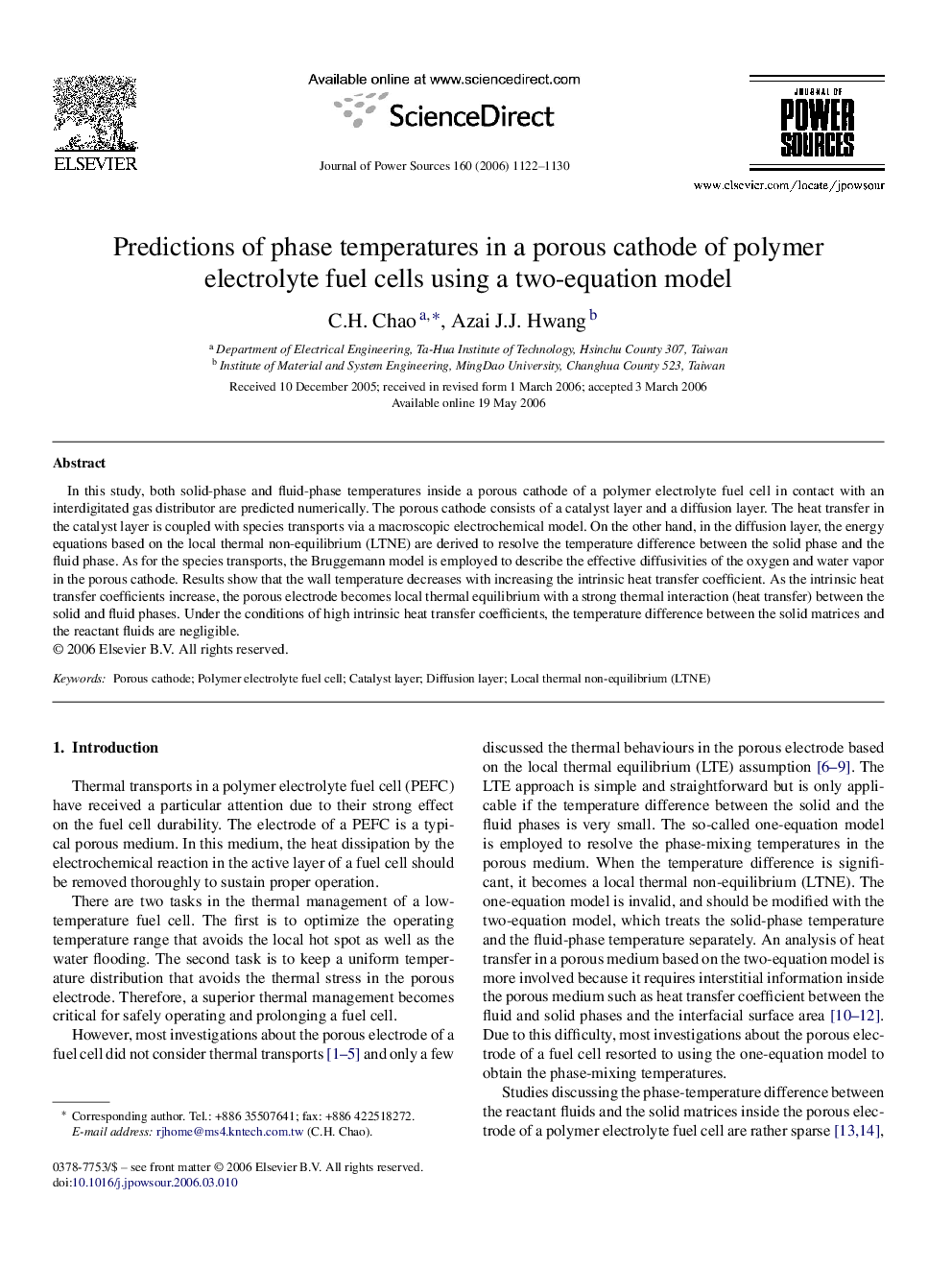| Article ID | Journal | Published Year | Pages | File Type |
|---|---|---|---|---|
| 1287171 | Journal of Power Sources | 2006 | 9 Pages |
In this study, both solid-phase and fluid-phase temperatures inside a porous cathode of a polymer electrolyte fuel cell in contact with an interdigitated gas distributor are predicted numerically. The porous cathode consists of a catalyst layer and a diffusion layer. The heat transfer in the catalyst layer is coupled with species transports via a macroscopic electrochemical model. On the other hand, in the diffusion layer, the energy equations based on the local thermal non-equilibrium (LTNE) are derived to resolve the temperature difference between the solid phase and the fluid phase. As for the species transports, the Bruggemann model is employed to describe the effective diffusivities of the oxygen and water vapor in the porous cathode. Results show that the wall temperature decreases with increasing the intrinsic heat transfer coefficient. As the intrinsic heat transfer coefficients increase, the porous electrode becomes local thermal equilibrium with a strong thermal interaction (heat transfer) between the solid and fluid phases. Under the conditions of high intrinsic heat transfer coefficients, the temperature difference between the solid matrices and the reactant fluids are negligible.
